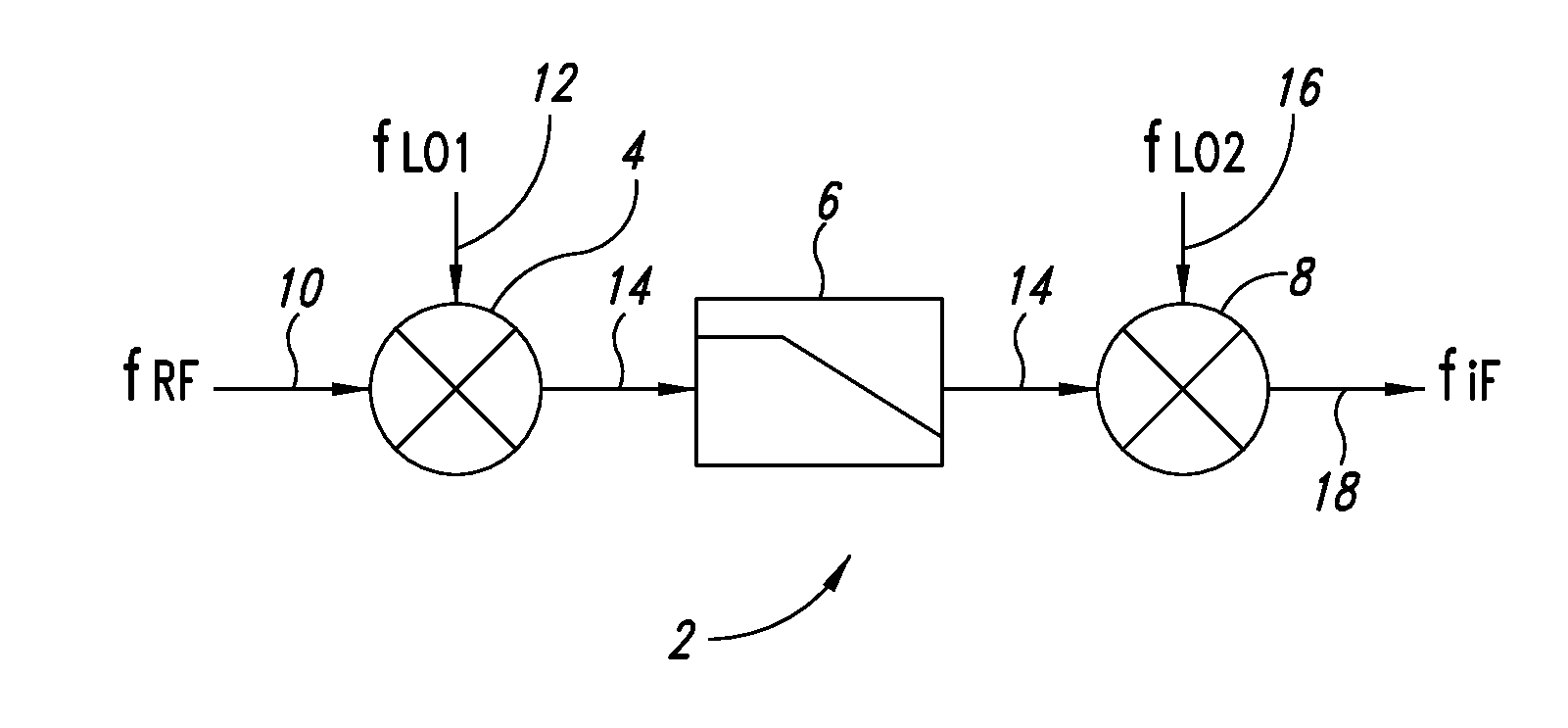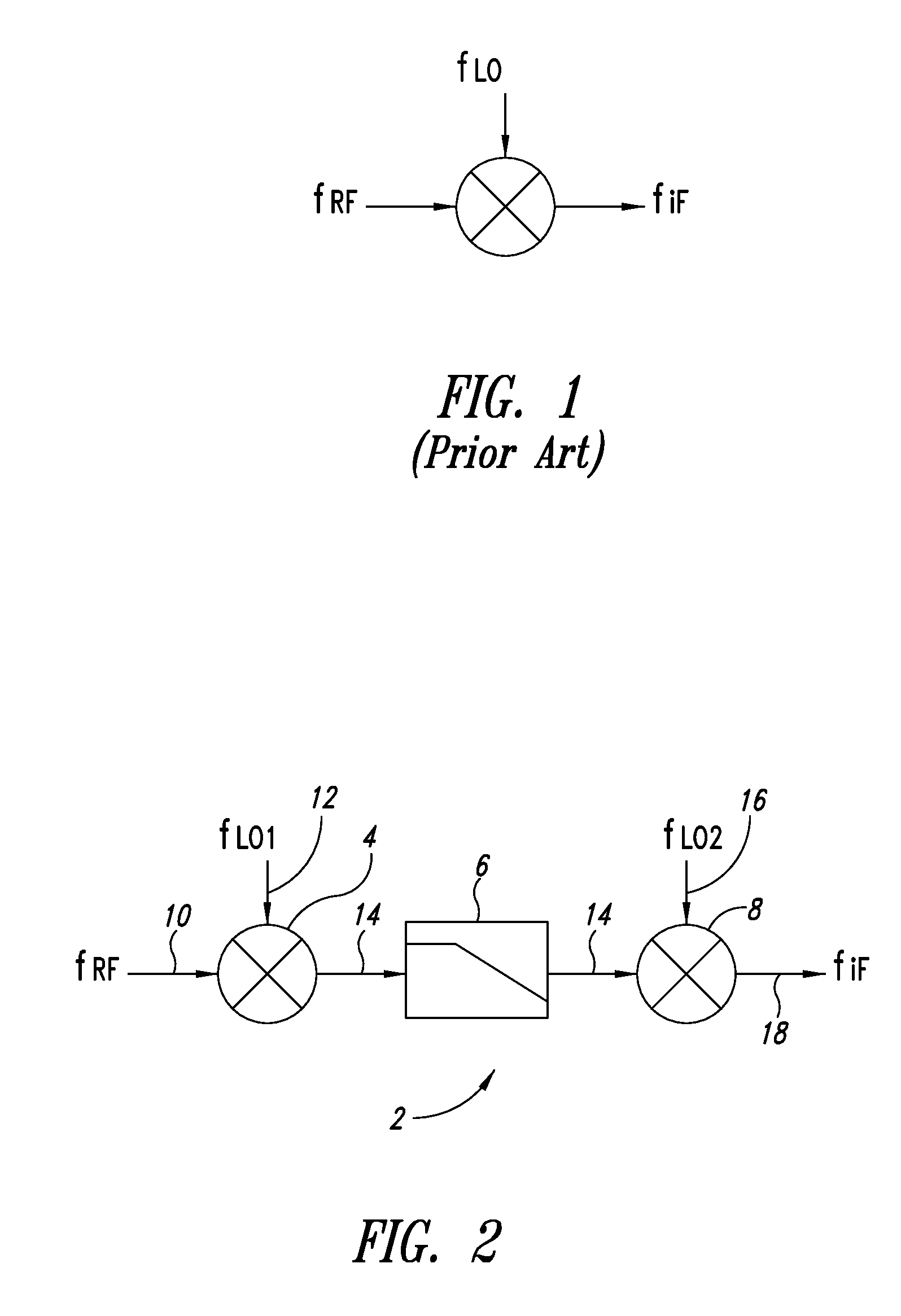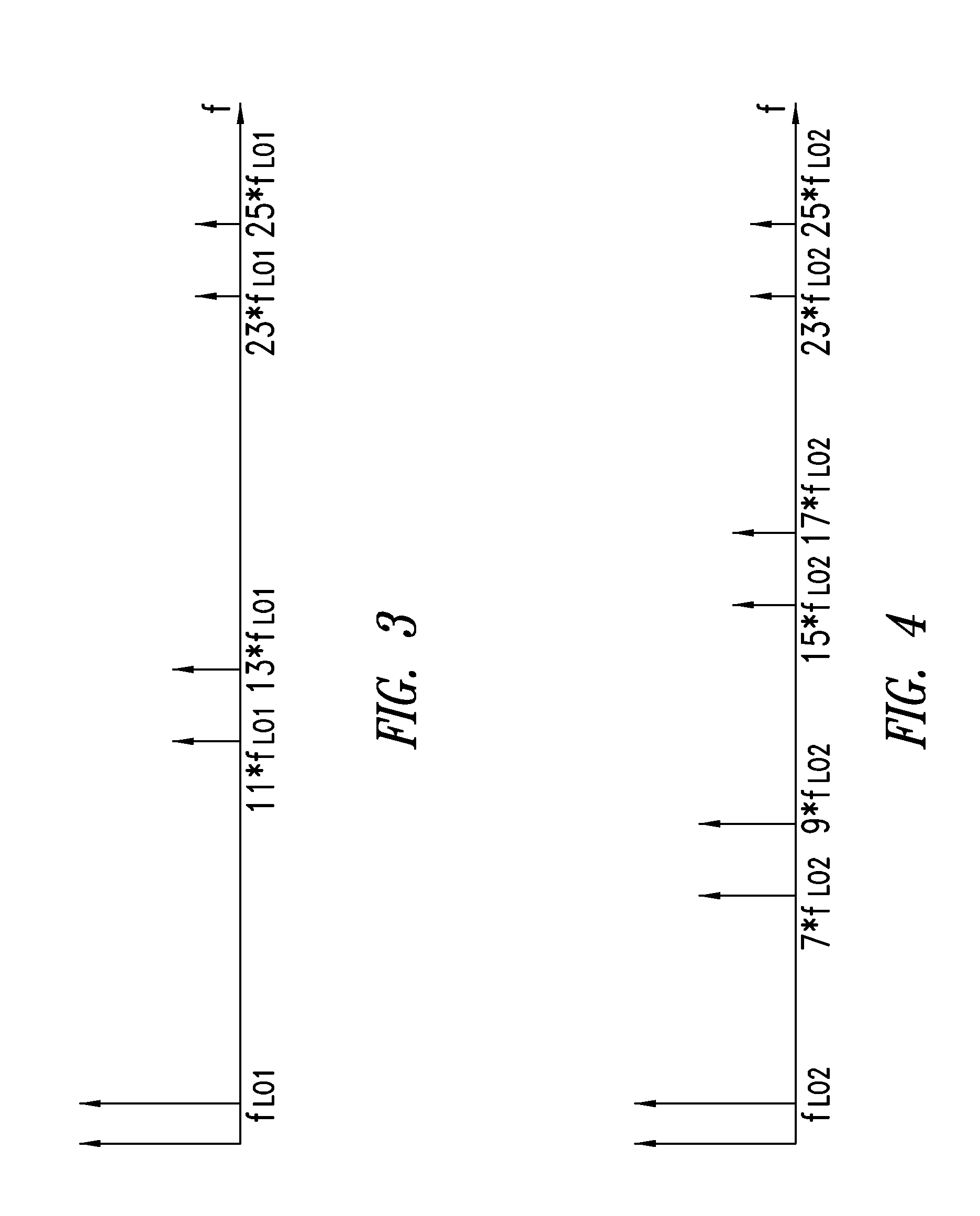Harmonic rejection mixer
a mixer and harmonic rejection technology, applied in the direction of electrical equipment, radio relay systems, transmission, etc., can solve the problems of undesired components being mixed onto affecting the signal quality at the mixer output, and affecting the signal quality, so as to reduce the number of unwanted spectral components introduced into the mixer output frequency, improve harmonic rejection, and reduce signal degradation.
- Summary
- Abstract
- Description
- Claims
- Application Information
AI Technical Summary
Benefits of technology
Problems solved by technology
Method used
Image
Examples
Embodiment Construction
[0018]In FIG. 2, a block diagram of a harmonic rejection mixer 2 in accordance with an embodiment of the disclosure is shown. The exemplary harmonic rejection mixer 2 is used in a receiver. It includes an up-conversion mixer 4, a low pass filter 6, and a down-conversion mixer 8. A mixer input signal 10 is input into the up-conversion mixer 4. The term mixer input signal denotes a desired frequency component of the wide frequency spectrum received by the receiver front end, such as the antenna (not shown). Accordingly, the mixer input signal has a desired radio frequency fRF, which is to be translated to an intermediate frequency fIF. As the mixer is designed to translate this particular desired radio frequency to the intermediate frequency, it is herein referred to as the mixer input frequency, although a wide frequency spectrum is usually supplied to the mixer. The width of this spectrum depends on the antenna design and optional pre-selection filtering on the received RF spectrum ...
PUM
 Login to View More
Login to View More Abstract
Description
Claims
Application Information
 Login to View More
Login to View More - R&D
- Intellectual Property
- Life Sciences
- Materials
- Tech Scout
- Unparalleled Data Quality
- Higher Quality Content
- 60% Fewer Hallucinations
Browse by: Latest US Patents, China's latest patents, Technical Efficacy Thesaurus, Application Domain, Technology Topic, Popular Technical Reports.
© 2025 PatSnap. All rights reserved.Legal|Privacy policy|Modern Slavery Act Transparency Statement|Sitemap|About US| Contact US: help@patsnap.com



